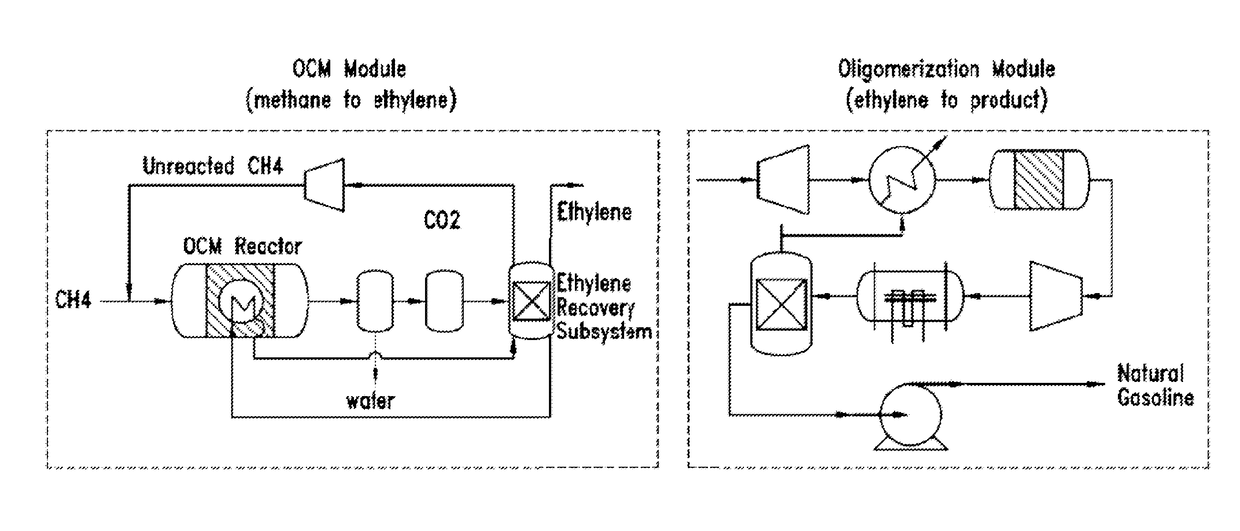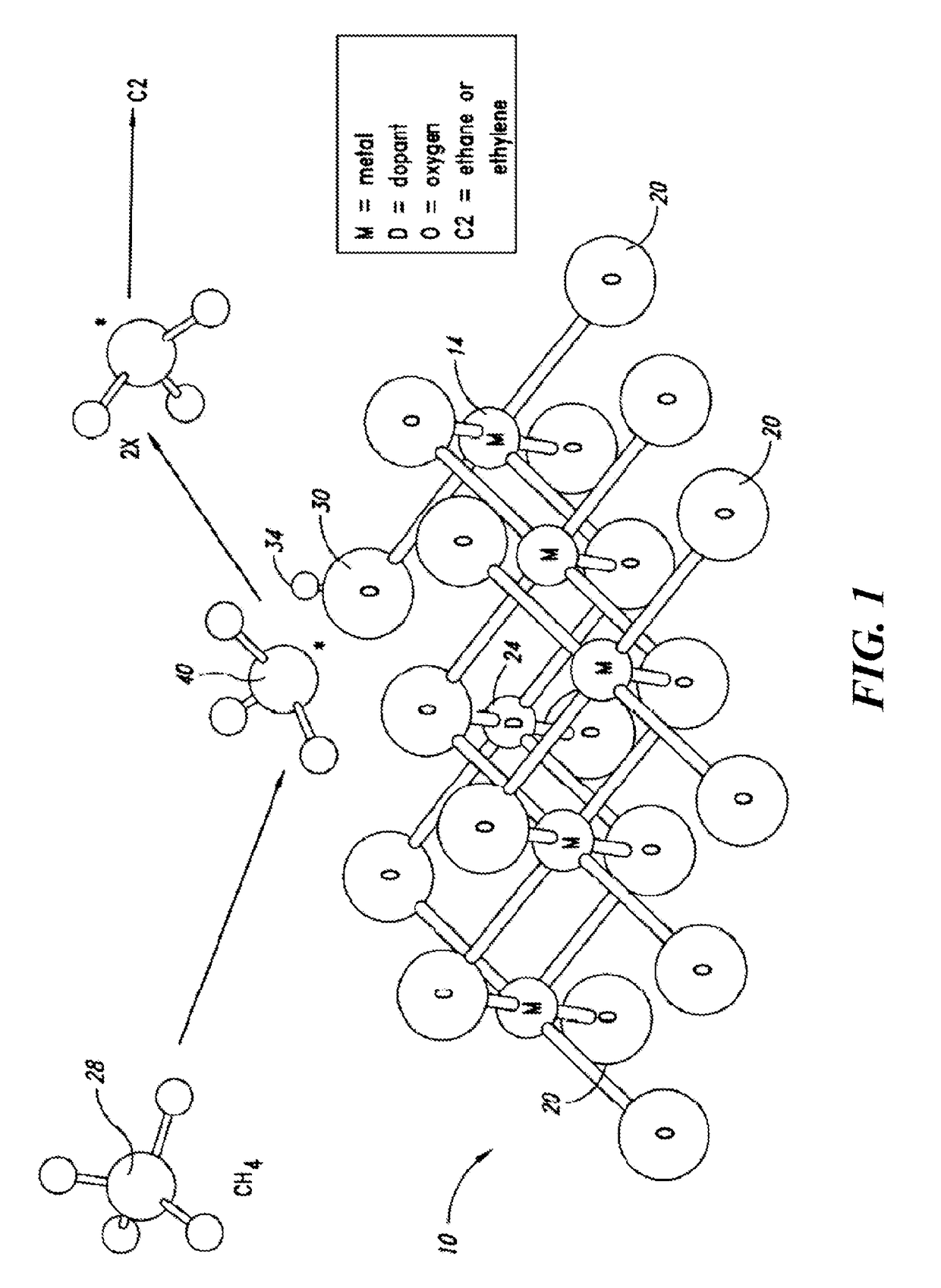Catalysts and methods for natural gas processes
a natural gas and catalyst technology, applied in the direction of physical/chemical process catalysts, bulk chemical production, metal/metal-oxide/metal-hydroxide catalysts, etc., can solve the problem of not being able to commercialize the ocm reaction, the rate limitation step of reactant adsorption is often the limit step, and the lack of effective catalysts and catalytic effects
- Summary
- Abstract
- Description
- Claims
- Application Information
AI Technical Summary
Benefits of technology
Problems solved by technology
Method used
Image
Examples
example 1
Oxidative Coupling of Methane with a Surface Area Gradient
[0538]Three different catalyst beds having a length L are prepared as follows:
[0539]1) the first catalyst bed comprises about 70% of the total OCM active catalyst surface area in a portion of the catalyst bed ranging from the front end to a distance equal to about 80% of L;
[0540]2) the second catalyst bed comprises about 95% of the total OCM active catalyst surface area in a portion of the catalyst bed ranging from the front end to a distance equal to about 50% of L; and
[0541]3) the third catalyst bed comprises a total OCM active catalyst surface area evenly distributed throughout the entire length L of the catalyst bed.
[0542]The oxidative coupling of methane is performed in the above catalyst beds under flow conditions of 17,000, 21,000 and 26,000 GHSV / h. It is found that C2+ selectivity of the OCM reaction in catalyst beds 1 and 2 is higher under all flow conditions relative to the COM reaction in catalyst bed 3.
example 2
Catalytic Materials with Low Shrinkage
[0543]A catalytic material was prepared by sintering a nanostructured catalyst having a BET surface area of greater than 5 m2 / g at a temperature of approximately 1,100° C. to obtain a catalyst having a BET surface area of less than 2 m2 / g. The thus obtained low surface area catalyst was admixed with the nanostructured catalyst at various ratios and the resulting admixture was sintered at temperatures ranging from approximately 800° C. to 900° C. The catalyst was then briefly heated in CO2 / N2 atmosphere at about 650° C.
[0544]The catalytic material is optionally doped before or after the foregoing sintering steps and is tableted or extruded into the desired form. It was found that the prepared catalytic material has reduced shrinkage relative to a catalytic material comprising only the nanostructured catalyst or the low surface area catalyst as the only OCM active catalyst.
[0545]Table 1 provides data for a catalytic material prepared according to ...
example 3
Catalysts of Formula (I) and (IA)
[0546]Catalysts of Formula (I) and (IA) were prepared by admixing the appropriate elements in their nitrate or oxide form and calcining the resulting mixture. FIGS. 8 and 9 provide C2 yield, C2+ selectivity and methane conversion data for a catalyst of Formula (I) and a catalyst of Formula (II), respectively.
[0547]The catalyst of Formula (I) (FIG. 8) comprised approximately equal amounts of barium and cerium and from about 5-10% each of yttrium and zirconium dopants. This catalyst had a C2+ selectivity of greater than 65% at temperatures above 700° C.
[0548]The catalyst of Formula (IA) (FIG. 9) comprised approximately a 2:1 ratio of barium to cerium and about 15-25% of each of a group 13 element and a lanthanide. This catalyst had a C2+ selectivity of greater than 55% at temperatures above 700° C.
PUM
| Property | Measurement | Unit |
|---|---|---|
| Temperature | aaaaa | aaaaa |
| Temperature | aaaaa | aaaaa |
| Fraction | aaaaa | aaaaa |
Abstract
Description
Claims
Application Information
 Login to View More
Login to View More - R&D
- Intellectual Property
- Life Sciences
- Materials
- Tech Scout
- Unparalleled Data Quality
- Higher Quality Content
- 60% Fewer Hallucinations
Browse by: Latest US Patents, China's latest patents, Technical Efficacy Thesaurus, Application Domain, Technology Topic, Popular Technical Reports.
© 2025 PatSnap. All rights reserved.Legal|Privacy policy|Modern Slavery Act Transparency Statement|Sitemap|About US| Contact US: help@patsnap.com



